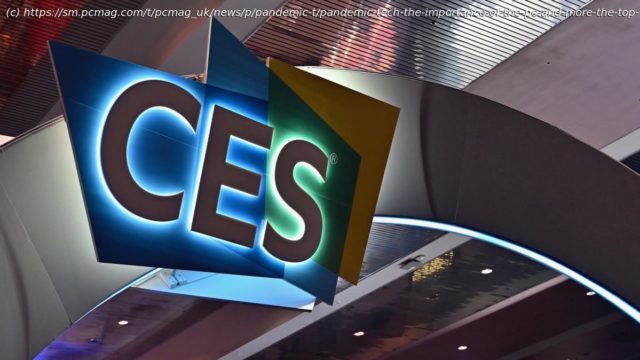No Vegas, no show floor, no problem. This year’s all-digital CES still set the stage for what’s to come in the world of tech in 2021. These are the top trends we saw at the show.
Deducing the top trends at a massive trade show like CES is more art than science. I’ve been doing it for 15 years and have generally followed the same process: Collect as much information as possible under embargo in advance of the show, limit show meetings to breaking news and relationship-building, and try to read everything the PCMag team publishes. There’s also a longstanding tradition of asking every other journalist I meet if they’ve seen anything “cool.” After all, there’s an infinite amount to cover, and scoops age quickly under the omnipresent glare of 24/7 media. This year, of course, things were different. There were no flights to Vegas or overpriced hotel rooms. There were no endless lines to get into press conferences or a tightly thronged show floor. (Wheelie bags? Seriously people?!) There were no vendor dinners where makers, marketers, technologists, and spin doctors could share a meal and seek common interests. And there was no collegial collaboration among competing journalists. This year’s CES was a series of Zoom calls and streamed video feeds. But the show went on, as everything must, making the best of this new world. In the last week, we’ve seen significant platform releases from AMD and Intel, cutting-edge display innovations from LG and Sony, and a host of new technologies designed to help us live happier lives. How many of us knew we needed a smart toilet before now? Even in this virtual, socially distanced form, CES holds clues to our future. PCMag editors have spent a staggering amount of time covering the torrent of news from the show. You can read it all here, but we’ve also stepped back to look at the big picture and gather these seven key takeaways to help you know what’s in store for the year ahead. And as far as virtual shows go, I much prefer sitting in a hotel bar with a CTO and have them simply tell me what the future holds, but there is always next year.1. COVID-19 Tech Is Spreading Unsurprisingly, the global COVID-19 pandemic has caught the attention of the tech industry, with a host of companies promising to fight the virus. LG’s InstaView Refrigerator uses UVnano technology to sanitize drinking water. LG says it will kill up to 99.9% of bacteria including E. coli, staph, and pseudomonas aeruginosa. The company also showed a coronavirus-fighting robot, which patrols the room blasting out UV light. LG claims the robot will «move easily around tables, chairs, and other furniture, generally irradiating a room’s touchable surfaces in 15 to 30 minutes, disinfecting multiple areas on a single battery charge.» The bot will start rolling out in the next few months. Similarly, there are a host of new UV sanitizers hitting the market promising to clean the funk from your phone. As PCMag’s Steven Winkleman recently explained, tiny UV sanitizers need to be pretty powerful to be effective, so be sure to read our story to understand which sanitizers work best and how to use them properly. There was also no shortage of high-tech face masks, including one from Razer with RGB lighting, and another from Binatone that has a built-in Bluetooth headset. Now, we don’t expect any of these products to stop the virus in its tracks, but they have the potential to make our lives easier and safer for the time being. Just make sure you’re following the advice of the CDC before believing in the promises of a tech manufacturer.2. Stay Home, Stay Safe, Stay Smart One of the pandemic’s dramatic consequences is that we’re spending a lot more time at home. The increased time we spend sitting around inside, both working and entertaining ourselves, has been a boon for the smart home market. To that end, Samsung announced the JetBot 90 AI+, a robot vacuum that can both clean your house and serve as a roving security camera. Companies like iRobot and Ecovacs dominate the Robot vacuum market, but Samsung could be a big player here.






